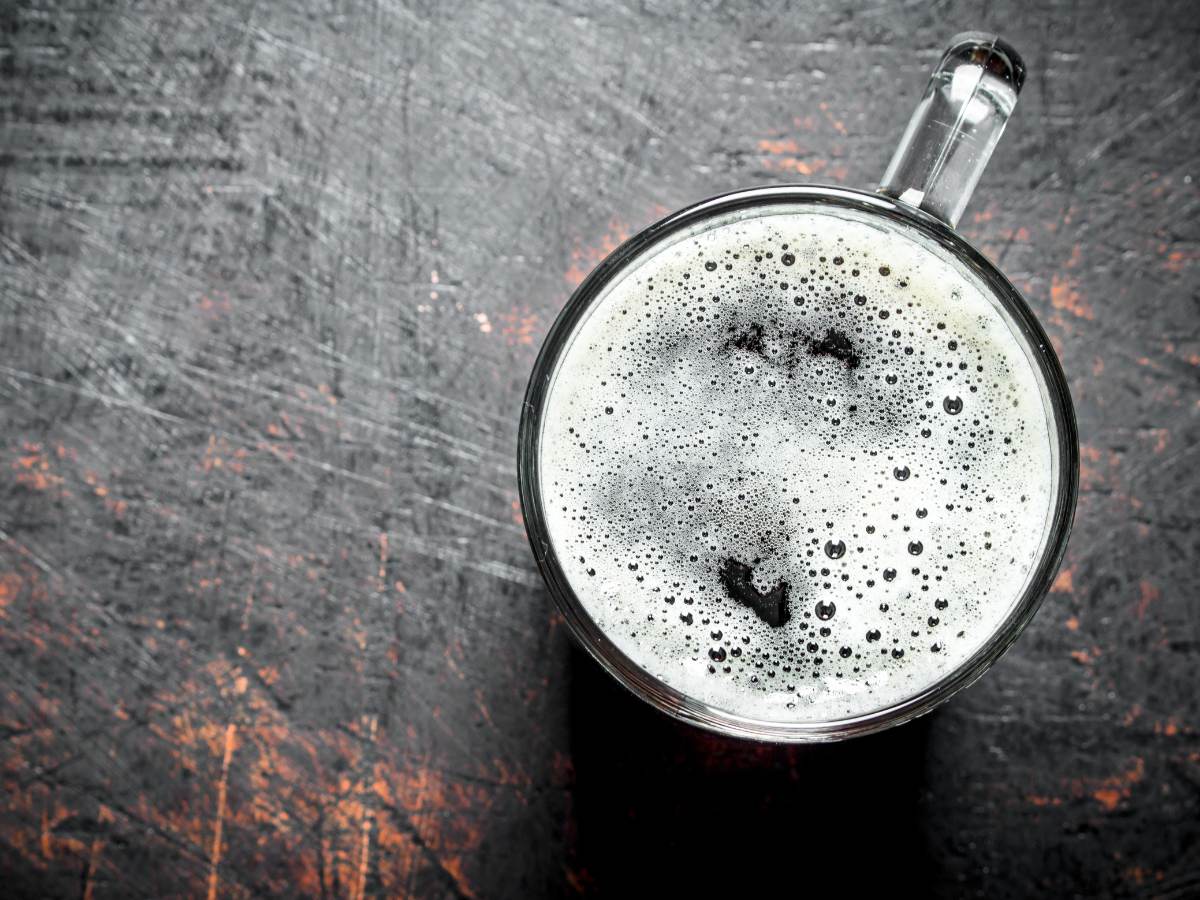
Learning to identify, understand and remedy off-flavours in your beer will make you a better brewer. So, with this noble pursuit in mind, we’ve outlined five of the most common yeast-related off-flavours along with strategies to avoid, and/or minimise their presence in your next brew.
Off flavours top 5 main offenders
1. Diacetyl
2. Acetaldehyde
3. Sulfur
4. Phenols
5. Fusel alcohols
1. Diacetyl
Unless you’re fermenting a chardonnay circa 1993, chances are the unmistakable buttery flavour of diacetyl is not going to be a welcome addition to your brew. While some might argue that a subtle hint of diacetyl can add complexity to your beer, its presence more often than not adds a cloying sweetness that undermines a crisp lager or hoppy ale.
Diacetyl forms as a byproduct of the fermentation of sugars into alcohol. Fortunately, yeast will typically reabsorb and ‘clean up’ diacetyl towards the end of the fermentation process. This is why allowing fermentation to fully complete is an important step in reducing diacetyl levels.
However, if the fermentation is incomplete or the health of the yeast is compromised — for instance, due to insufficient nutrients, high alcohol content, high temperatures, or contamination — the yeast may not be able to metabolise all the diacetyl. Similarly, premature removal of yeast from the beer can leave diacetyl unprocessed, resulting in higher concentrations in your beer.
There are methods brewers use to limit diacetyl levels, including proper yeast management, controlling fermentation temperatures, and performing a “diacetyl rest” at the end of fermentation, where the temperature is slightly raised to encourage the yeast to reabsorb the diacetyl.
2. Acetaldehyde
Acetaldehyde is a naturally-occurring compound that’s formed during the brewing process. It’s one of the many intermediate products yeast produces as it converts sugar to ethanol during fermentation.
In the brewing process, acetaldehyde is most often reduced to ethanol by yeast during fermentation. However, some amount of it can remain in the finished beer. This residual acetaldehyde can give the beer a distinct flavour often described as green apple-like or grassy, and in high concentrations, it can lead to off-flavors that may be undesirable.
Acetaldehyde formation is more common in beers that have been fermented at high temperatures, have been improperly stored, or have undergone oxidative stress. Beers that are “young” or not fully conditioned can also contain noticeable levels of acetaldehyde.
Proper brewing techniques can help manage acetaldehyde levels. This includes ensuring a healthy yeast population during fermentation, controlling fermentation temperatures, and allowing sufficient time for the yeast to fully metabolise acetaldehyde into ethanol. Good handling and storage practices post-fermentation can also help prevent the formation of acetaldehyde.
3. Sulphur
Rotten eggs, burnt rubber or struck matches – not really favourable aromas for your next brew. If you’re confronted with notes of any of these when cracking into a new brew, it’s a good bet they’re the result of the production of sulphur compounds during fermentation. There are a number of reasons this might occur.
Firstly, check your strain. Some strains are known to produce sulphur compounds, so if this is a problem for you, you might want to try something known to produce less sulphur.
As with all yeast-related off-flavours, yeast health and vitality play a role. Poor yeast health or stressed yeast can lead to increased sulphur production. Ensure you have a sufficient yeast pitch rate and use healthy yeast that is free from contamination. Adequate oxygenation and proper yeast nutrient supplementation can help promote yeast health and reduce sulphur production.
The temperature inside your fermenter can influence the production of sulphur compounds. Some yeast strains are more prone to sulphur production at higher temperatures. Keeping fermentation temperatures within the recommended range for the yeast strain you are using can help minimise sulphur off-flavours.
Fermentation time can also be a factor. Allowing sufficient time in the fermenter for the yeast to complete its work can help reduce sulphur off-flavours. In some cases, extended aging or conditioning can allow the yeast to clean up and reabsorb sulphur compounds. Patience and longer maturation periods will often improve the aroma of the final product.
Lastly, up your sanitation game. Proper sanitation practices throughout the brewing process are crucial to prevent microorganisms that can contribute to sulphur off-flavours contaminating your brew. Ensure that your brewing equipment, fermentation vessels, and packaging materials are thoroughly cleaned and sanitised.
4. Phenols
If you’re getting medicinal, plastic, clove or band-aid-like aromas coming off your beer, chances are phenols are to blame. Phenolic compounds are produced either by your yeast or bacterial contamination.
It’s worth noting that phenolic flavours are desirable in some Belgian beers and brewers of these styles often use yeast strains known for the production of phenols. So, if phenols are not to your liking, pay attention to the yeast you’re using.
Phenol production for some yeasts will increase depending on the temperature during fermentation. Some produce more when temperatures are warmer, and some more when it’s cooler. Controlling the fermentation temperature within the recommended range for the yeast strain being used is important to manage phenolic production. If you want to reduce phenolic off-flavours, consider fermenting at the lower end of the recommended temperature range for your yeast.
Contamination by certain bacteria or wild yeast strains can also result in phenolic off-flavours. Proper sanitation practices throughout the brewing process, including cleaning and sanitising all equipment and ensuring good hygiene, can help prevent contamination and minimise the risk of phenolic off-flavours.
Water chemistry can also affect phenolic production. High levels of certain minerals, such as chlorine or chloramine, in the brewing water can contribute to phenolic off-flavours. Treating your brewing water to remove or neutralise these compounds can help prevent phenolic issues.
5. Fusel alcohol
Fusel alcohols are higher molecular weight alcohols that can contribute harsh, solvent-like flavors and higher alcohol warmth in beer. They are typically formed when yeast metabolises amino acids during fermentation, especially under certain conditions.
As is often the case with many yeast off-flavours, high fermentation temperatures can increase fusel alcohol production. The metabolic activity of yeast increases with higher temperatures, leading to more pronounced production of fusel alcohols. To minimise fusel alcohol formation, it is important to control the fermentation temperature within the recommended range for the yeast strain being used.
Stressed and unhealthy yeast can also contribute to the production of fusel alcohols. Ensure you have a sufficient yeast pitch rate and use healthy yeast that is free from contamination. Adequate oxygenation and proper yeast nutrient supplementation can support yeast health and minimise stress during fermentation. Yeast nutrient additions, such as yeast assimilable nitrogen (YAN) or specific amino acids, can be beneficial, especially for high-gravity or nutrient-deficient worts. But this is a double-edged sword as too much free amino nitrogen (FAN) can increase fusel alcohol. If you are getting high fusel alcohol, take a look at your FAN and try reducing it.
Oxygen exposure during fermentation can also contribute to increased fusel alcohol production. It is important to limit oxygen exposure after the initial yeast pitch, as excessive oxygen can lead to stressed yeast and undesirable by-products. Properly sealing fermentation vessels and minimising splashing or agitation can help control oxygen levels.
Lastly, monitoring and adjusting the pH of the wort during fermentation can have an impact on fusel alcohol production. Certain pH levels can promote the production of fusel alcohols, so maintaining an appropriate pH range for the yeast strain being used is recommended.
So, there they are, our top five yeast-related off-flavours. Hopefully learning to identify them and understanding what causes them will arm you with the knowledge to banish them from your brews.



